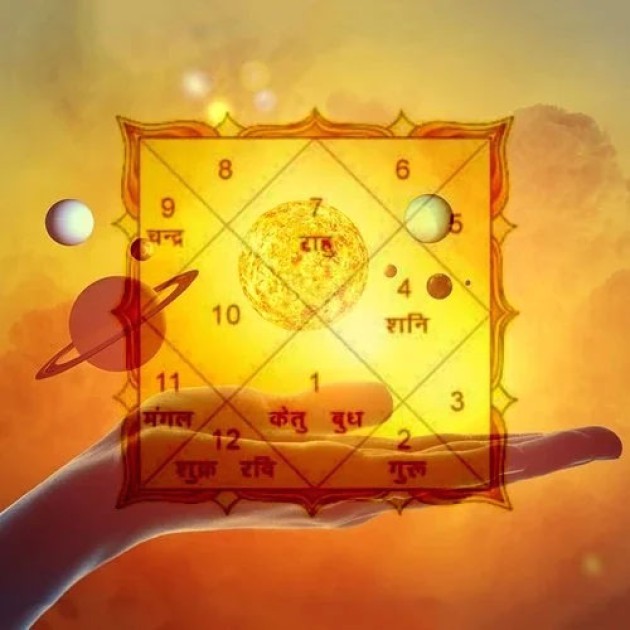
Vastu Shastra is an ancient Indian science that focuses on architecture and design, emphasizing the harmony between nature and human life. The term "Vastu" translates to "dwelling" or "site," while "Shastra" means "science" or "knowledge." Together, they form a holistic approach to creating spaces that promote well-being, prosperity, and peace. Rooted in the Vedic texts, Vastu Shastra encompasses various principles related to building construction, interior design, and urban planning.
The Foundations of Vastu Shastra
Vastu Shastra is based on the belief that the layout, design, and orientation of a building can significantly influence the energy flow within the space. The ancient sages who formulated these principles observed how natural elements, celestial bodies, and human beings interact, leading to specific guidelines for creating harmonious environments. The central tenet of Vastu Shastra is that every structure must be aligned with the forces of nature to ensure the well-being of its inhabitants.
Key elements of Vastu Shastra include:
Five Elements (Pancha Mahabhuta): Vastu Shastra recognizes five essential elements that compose the universe:
- Earth (Prithvi): Represents stability and nourishment.
- Water (Jal): Symbolizes fluidity and abundance.
- Fire (Agni): Signifies energy and transformation.
- Air (Vayu): Represents movement and vitality.
- Space (Akasha): Encompasses the atmosphere and expansiveness.
Cardinal Directions: The eight cardinal directions—north, south, east, west, northeast, northwest, southeast, and southwest—play a vital role in Vastu Shastra. Each direction is associated with specific energies and deities. For example:
- North: Associated with wealth and prosperity, ruled by Kuber, the God of Wealth.
- East: Linked to health and well-being, ruled by Surya, the Sun God.
- South: Represents stability and security, ruled by Yama, the God of Death.
- West: Associated with creativity and growth, ruled by Varuna, the God of Water.
Principles of Vastu Shastra
Site Selection: The selection of a site is the first step in Vastu Shastra. Ideal locations are those that are elevated, have good drainage, and are free from negative influences such as pollution or overcrowding. The shape of the plot also matters, with square or rectangular plots being considered the most favorable.
Building Orientation: The orientation of a building is crucial in Vastu Shastra. The main entrance should ideally face north or east to invite positive energy and sunlight into the space. The positioning of windows, doors, and balconies should also be considered to facilitate proper ventilation and natural light.
Room Placement: The arrangement of rooms within a structure should follow specific guidelines based on their function. For example:
- Living Room: Should be located in the northeast or north to enhance positivity and social interactions.
- Bedroom: Ideally situated in the southwest to promote rest and stability.
- Kitchen: Should be placed in the southeast, where the fire element is most potent.
- Bathroom: Ideally located in the northwest or southeast to avoid negative energy flow.
Colors and Materials: The choice of colors and materials in construction and decoration is also essential in Vastu Shastra. Light and soothing colors promote tranquility, while vibrant colors can energize a space. Natural materials like wood, stone, and clay are preferred, as they resonate with the five elements.
Landscaping and Outdoor Spaces: The surrounding environment plays a significant role in Vastu Shastra. Trees, plants, and water bodies should be strategically placed to enhance the energy of the property. For example, a water body in the northeast can attract prosperity, while heavy trees in the southwest can provide stability and protection.
Benefits of Vastu Shastra
Implementing Vastu Shastra principles can lead to numerous benefits, including:
- Enhanced Well-Being: A Vastu-compliant space promotes physical and mental health, leading to improved overall well-being for its occupants. Proper energy flow can reduce stress and anxiety, fostering a harmonious living environment.
- Increased Prosperity: Aligning a home or workspace with Vastu principles can enhance financial stability and prosperity. Positive energy attracts wealth and opportunities, making it easier to achieve financial goals.
- Better Relationships: Vastu Shastra encourages harmonious interactions among family members and colleagues. By creating a balanced and nurturing environment, relationships can flourish, leading to stronger bonds and improved communication.
- Enhanced Creativity and Productivity: In workspaces, Vastu principles can foster creativity and productivity. A well-designed environment can inspire employees and encourage collaboration, leading to better performance and job satisfaction.
- Spiritual Growth: Vastu Shastra encourages spiritual growth by creating spaces that resonate with positive energies. This alignment can foster a deeper connection with oneself and the universe, promoting personal and spiritual development.
Criticism and Modern Adaptations
While Vastu Shastra is widely respected, it has faced criticism for its rigid rules and the perceived lack of scientific basis. Some skeptics argue that its principles are rooted in superstition rather than empirical evidence. However, many practitioners and architects have adapted Vastu Shastra to modern design practices, integrating its principles with contemporary architectural techniques.
For instance, sustainable architecture that emphasizes energy efficiency, natural lighting, and harmonious living aligns well with Vastu Shastra's core tenets. Additionally, urban planners are increasingly considering Vastu principles in city layouts to promote community well-being and environmental harmony.
Conclusion
Vastu Shastra is a profound and intricate system that emphasizes the relationship between architecture and the natural world. By understanding and applying its principles, individuals can create living and working spaces that foster harmony, well-being, and prosperity. The emphasis on balance, positive energy flow, and the integration of the five elements makes Vastu Shastra a timeless guide for those seeking to enhance their quality of life through the spaces they inhabit.
As modern society continues to evolve, the relevance of Vastu Shastra remains strong, offering valuable insights into how our environments can impact our lives. Whether one is building a new home, renovating an existing space, or simply looking to improve their surroundings, Vastu Shastra provides a framework for creating balanced and harmonious environments that nurture the spirit and promote well-being.
Other Services

Kundli Matching
Kundli matching, also known as horoscope matching or Gun Milan, is a vital aspect of Vedic astrology, primarily performed to ensure harmony, love, and success in married life.

Predictive astrology
Predictive astrology is a fascinating and complex branch of astrology that seeks to forecast future events and life changes based on the positions and movements of celestial bodies. Unlike natal astrology

Vedic Astrology
Vedic astrology, also known as Jyotish, is an ancient system of astrology that originates from the Vedic traditions of India. Rooted in the spiritual and philosophical teachings of the Vedas, the sacred Hindu scriptures

Lal Kitab Astrology
Lal Kitab, translating to "The Red Book," is a unique and ancient system of astrology that originates from India, specifically attributed to the 19th-century astrologer

Numerology Astrology
Numerology astrology is a fascinating blend of numerology and astrology, two ancient practices that seek to understand the influence of numbers and celestial bodies on human lives.
